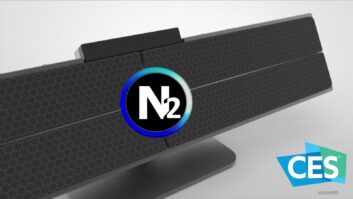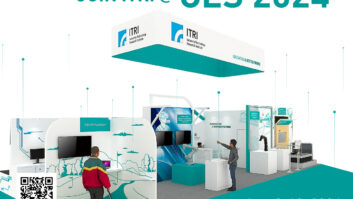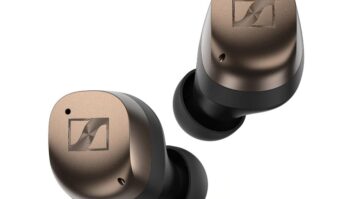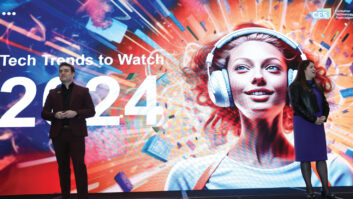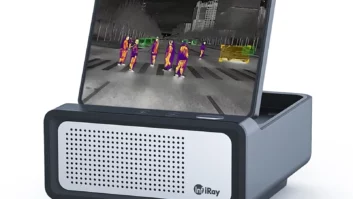LAS VEGAS -Preaching to the converted, a star-studded group of panelists nevertheless wowed the crowd with a series of presentations on the wonders of new sound production and reproduction techniques during a Surround Sound Roundtable Supersession at CES earlier this month.
The session culminated in a demo by Herbie Hancock of the 10.2 format developed through manipulation of an older recording. Virtual microphones and new algorithms made for the new sounds.
Panelists at the Supersession included Bjorn Dybdahl of Bjorn’s Audio/Video, Bob Ludwig of Gateway Mastering, TMH Labs’ Tom Holman, and musicians Steven DiStefano and Herbie Hancock.
While opening the session, Holman predicted the end of all format wars, with the computer facilitating the transparency of formats. All of his session demonstrations, in fact, were from a hard disk.
Quoting sister Cahners’ publication Variety, Holman pointed out that the voters for the Oscars, who can choose to see movies on DVD or on VHS, chose DVD last year to the tune of 300 participants. This year, 2,400 participants requested DVDs.
“Delivery of surround music is by many means,” Holman said. For historical perspective, he pointed to the oft-cited beginning of recorded surround sound in the movies via Disney’s bumblebee in 1938 and noted that the beginnings of 5.1 in 1987 lead to “the home theater phenomenon.”
Gateway Mastering’s Bob Ludwig discussed the procedure of DVD authoring and cautioned that novices underestimate the complexity, the time line and the necessary graphics design.
Most of the DVD-Audio work he is getting includes visuals, Ludwig said, and the use of stills requires careful handling because the required 2MB buffer can interrupt the music if the graphic is not properly planned.
Pointing out the importance of the production process, he said, “Mastering is the final creative step in the recording/ mixing process. Once approved, mastering becomes the first step in the manufacturing of the DVD.”
There are also new equipment problems, Ludwig noted, “Cables on 44.1 can be taxed at higher sampling,” and some aspects of recording and mastering at new levels-for instance, commercially available outboard EQ-don’t have equipment yet.
The retail perspective was covered by Dybdahl of Bjorn’s Audio/Video in San Antonio, Texas, who was an early proponent of and adviser to Holman’s THX project when it started at Lucasfilm. Dybdahl, who moved his one-site operation in November, employs 50 people, 24 of them salespeople, and has built several multichannel demo rooms.
He advised investing in sound rooms, which can cost $150,000 with no gear, because “if you demonstrate, people will get excited.” His new demo rooms include a living room, a garage theater, and an Ultimate Theater with 20 speakers.
“We do a lot of seminars [on technology to come],” said Dybdahl, who maintained that “you’re not going to screw up your sales, you’re going to grow your credibility.”
But it was the musicians who waxed most euphoric over the advent of multichannel sound and affordable digital recording equipment.
Guitarist Peter DiStefano said, “In 2001, I can be Jimi Hendrix, Eddie Kramer, Martin Scorsese, all in my bedroom. I am unashamedly tracking.”
Herbie Hancock, the star attraction, developed a thesis of the new impact of surround-sound possibilities on the creation of music.
Surround sound is the “catalyst for compositional ideas,” said Hancock, who is “interested in breaking down the cultural and genre barriers.” To the cheers of the crowd, he said that in “our immersive sonic world, stereo is unnatural, surround is natural”-and “the more channels the better.”
As illustration, he pointed to his 1991 album Dis is Da Drum, which had “too much musical information for two-channel sound.” Playing the piece with the new technology, Hancock implied that the time has come for his information to be disseminated properly.
In an apparently unplanned aside, Hancock addressed the controversy attending intellectual property on the Internet and said, “I always told the record companies, ‘Get a technical department. Get someone who listens to the Internet. You’re going to need it,'” but they didn’t listen.
On the other hand, he admitted, “I am the artist. If the record company doesn’t get money, I get nothing.”
Then Hancock lauded TMH’s new algorithms that can take stereo and, via Virtual Microphones, create virtual 10.2 sound, which he demonstrated.






